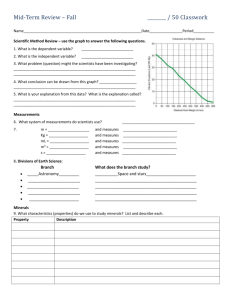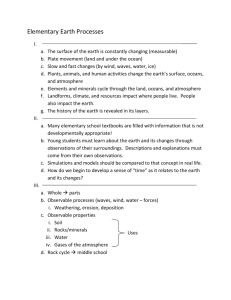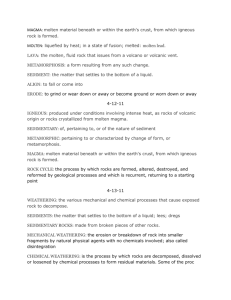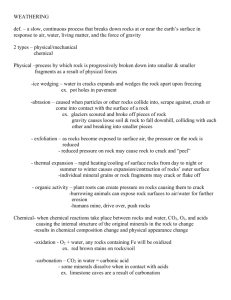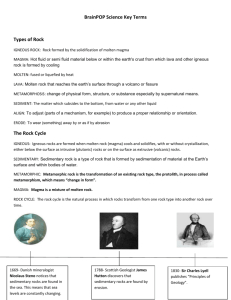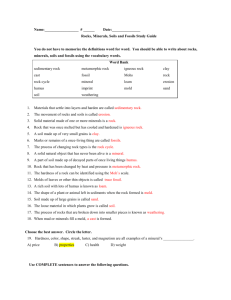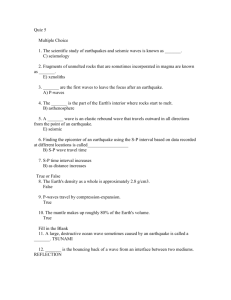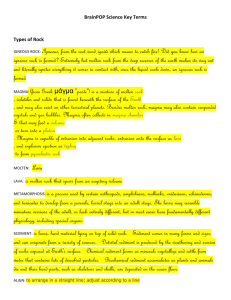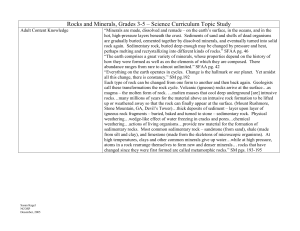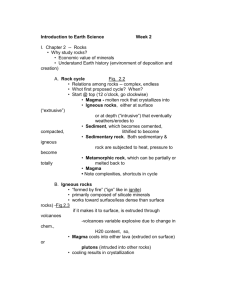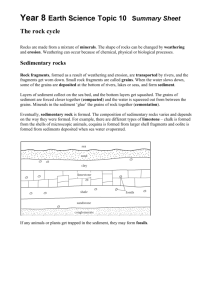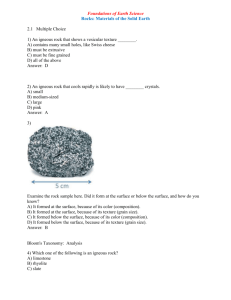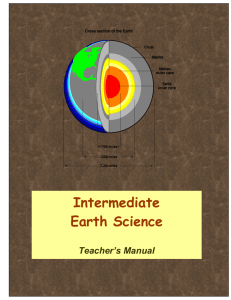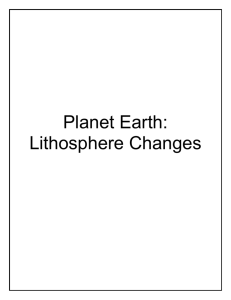Model the processes that are responsible for rock formation
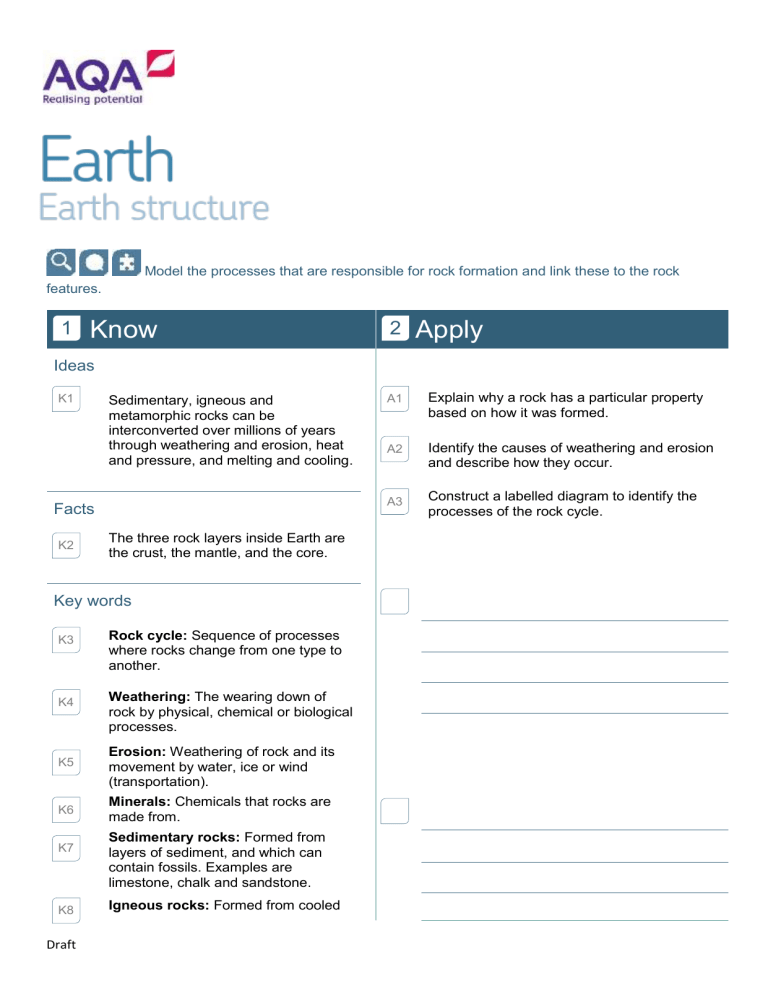
features.
Model the processes that are responsible for rock formation and link these to the rock
1
Know
Ideas
K1 Sedimentary, igneous and metamorphic rocks can be interconverted over millions of years through weathering and erosion, heat and pressure, and melting and cooling.
Facts
K2
The three rock layers inside Earth are the crust, the mantle, and the core.
Key words
K3
K4
K5
K6
K7
K8
Rock cycle: Sequence of processes where rocks change from one type to another.
Weathering: The wearing down of rock by physical, chemical or biological processes.
Erosion: Weathering of rock and its movement by water, ice or wind
(transportation).
Minerals: Chemicals that rocks are made from.
Sedimentary rocks: Formed from layers of sediment, and which can contain fossils. Examples are limestone, chalk and sandstone.
Igneous rocks: Formed from cooled
Draft
2
Apply
A1 Explain why a rock has a particular property based on how it was formed.
A2 Identify the causes of weathering and erosion and describe how they occur.
A3
Construct a labelled diagram to identify the processes of the rock cycle.
K9
K10
3
E1
E2
E3 magma, with minerals arranged in crystals. Examples are granite, basalt and obsidian.
Metamorphic rocks: Formed from existing rocks exposed to heat and pressure over a long time. Examples are marble, slate and schist.
Strata: Layers of sedimentary rock.
Extend
Identify circumstances that indicate fast processes of change on Earth and those that indicate slower processes.
Predict planetary conditions from descriptions of rocks on other planets.
Describe similarities and differences between the rock cycle and everyday physical and chemical processes.
Draft







